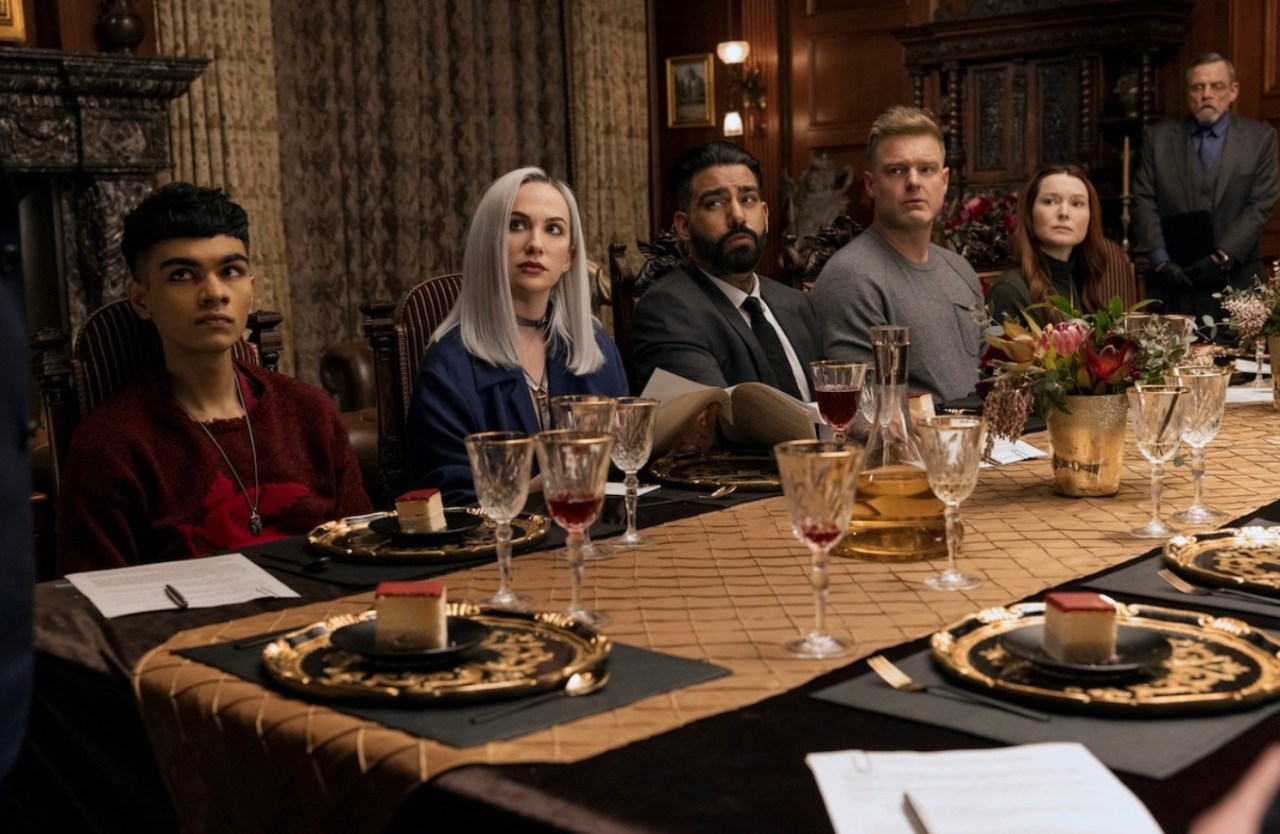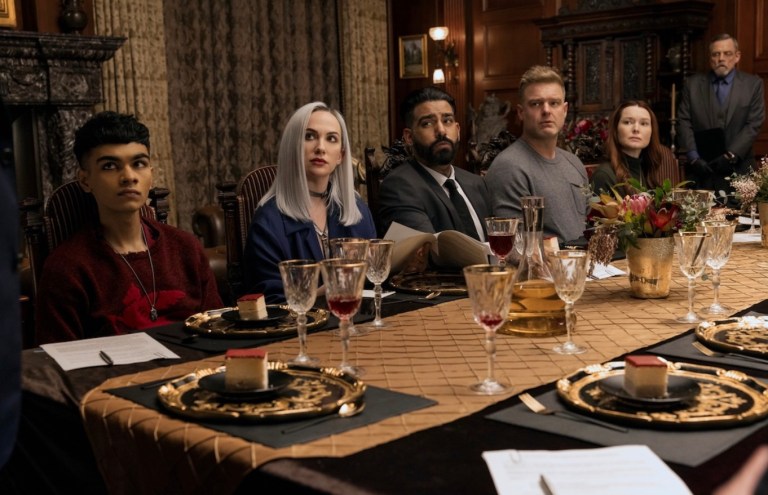
Every Edgar Allan Poe Story & Poem to Read Before Streaming ‘The Fall of the House of Usher’
By ![]() Josh Lezmi
Josh Lezmi
Time to read some Poe. And, a word to the wise: don’t read too late at night.
Horror auteur Mike Flanagan’s latest masterpiece for Netflix, The Fall of the House of Usher, is based on multiple short stories and poems by legendary gothic fiction writer Edgar Allan Poe. Flanagan employs The Fall of the House of Usher as the series framework. “Usher” is the story that ties each episode together, pulling the eight episodic-feeling installments into a coherent narrative.
While you do not need to familiarize yourself with Poe’s source material to digest the series, it definitely makes for a more enjoyable viewing experience. Flanagan seamlessly modernizes Poe’s work via a contemporary, opioid-epidemic-oriented spin while paying homage to Poe with just enough faithfulness to the source material. The show feels neither derivative nor destructive, but rather, at once, fresh and familiar.
In the series, karma and consequence come to punish the Ushers in the form of a steadfast and hauntingly poised Carla Gugino. She begins to eliminate the Ushers — one by one — via deaths that mirror Poe’s creative casualties. Who is she? What is she? It all remains a captivating mystery until the final frames.
So, if you’re looking to compare and contrast each Poe story to Flanagan’s screen stylings, here’s your reading list.
Note: To avoid spoiling the recently-released series, this post will highlight the narratives that unfold in Poe’s works (any series spoilers are a result of overlap between the tales due to the show’s adaptive nature).
“The Fall of the House of Usher”
Poe’s “The Fall of the House of Usher” follows the narrator’s visit to a decaying mansion, where his childhood friend, Roderick Usher, awaits his arrival. As the story unfolds, it becomes apparent that the Usher family is suffering at the hands of a hereditary curse. The curse leads to a series of supernatural and eerie happenings in one of the most formative haunted house tales ever written.
“The Masque of Red Death”
“The Masque of Red Death” unfolds in a secluded alley where Prince Prospero and his affluent attendees try to evade a deadly plague known as The Red Death. They attempt to isolate themselves by hosting a lavish masquerade ball with seven color-coded rooms, but the Grim Reaper comes for them nonetheless in macabre and unexpected ways.
“The Murder in the Rue Morgue”
Featuring Poe’s well-known investigator, C. Auguste Dupin, the narrative unfolds as Dupin and a close friend investigate a double murder in Paris. Despite a perplexing state of affairs, Dupin comes to discover that an escaped Orangutan is the culprit. This story emphasizes the power of deductive reasoning and highlights Poe’s nimble skillset within the detective genre.
“The Black Cat”
Narrated by a man who descends into madness, “The Black Cat” follows a devoted animal lover who transforms into a violent abuser — ultimately resulting in the murder of his wife and the hanging of his formerly beloved black cat. A story of moral decay, guilt, and remorse, the themes in “The Black Cat” feature heavily in Netflix’s The Fall of the House of Usher — outside and within the particular episode dedicated to the story.
“The Tell-Tale Heart”
In “The Tell-Tale Heart,” an unnamed protagonist continues to insist on their sanity (not often promising), while graphically describing the planning and execution involved in the murder of a man with a “vulture eye.” The man becomes paranoid — and ridden with guilt — as the tale progresses. He grows convinced that he can hear the heart of the vulture-eyed man beating beneath his floorboards. The famous tale begs to ask: what happens to the mind at the hands of a guilty conscience?
“The Gold-Bug”
William Legrand grows obsessed with solving a cryptic cipher that leads to buried treasure in “The Gold-Bug.” Alongside a servant and a friend, Legrand embarks on a journey to recover the hidden riches on Sullivan’s island. This story highlights Poe’s fascination with puzzles through a macabre and classically Southern Gothic lens.
“The Pit and the Pendulum”
Set during the Spanish Inquisition, an unnamed narrator finds themselves imprisoned and facing various tortures. The narrator must navigate a dark pit where a swinging pendulum threatens his existence. The story explores the horrors of confinement via an intricate exploration of fear and man’s survival instinct.
“The Raven”
In the poem, “The Raven”, a grieving man is visited by the ominous bird late one night. He grows increasingly mad as he struggles with the loss of his beloved Lenore, asking the bird if he will be reunited with her in the afterlife. As the bird continues to utter “Nevermore,” a foreboding melancholy seizes the atmosphere, as our protagonist descends further into his grief-stricken fever. One of Poe’s most renowned works, “The Raven” is a haunting take on the persistence of sorrow.
The first episode in the Netflix series is even titled “A Midnight Dreary,” which is pulled directly from the poem’s opening line: “Once upon a midnight dreary.”
“Annabel Lee”
Roderick Usher’s first love in the Netflix series is named Annabel Lee, and Roderick romantically utters lines from the poem when flirting with his wife. (The show seems to suggest that Roderick composed the piece.)
Poe’s last complete poem, “Annabel Lee’ tells the tragic story of a man’s deep-seated love for Lee, which was ultimately thwarted when “the wind came out of the cloud by night, Chilling and killing [his] Annabel Lee,” yet the narrator’s love will burn eternal as each night brings him dreams of the “beautiful Annabel Lee.”
And if you are so inclined…“The Narrative of Arthur Gordon Pym of Nantucket”
Poe’s only full novel, The Narrative of Arthur Gordon Pym of Nantucket does not feature in The Fall of the House of Usher as a singular episode. Rather, Mark Hamill portrays a modernized take on the character throughout the eight-episode series. He is the Usher family lawyer.
In the story, Pym stows away on a whaling ship called Grampus, and various misadventures and macabre events define his journey — from mutiny to cannibalism.











